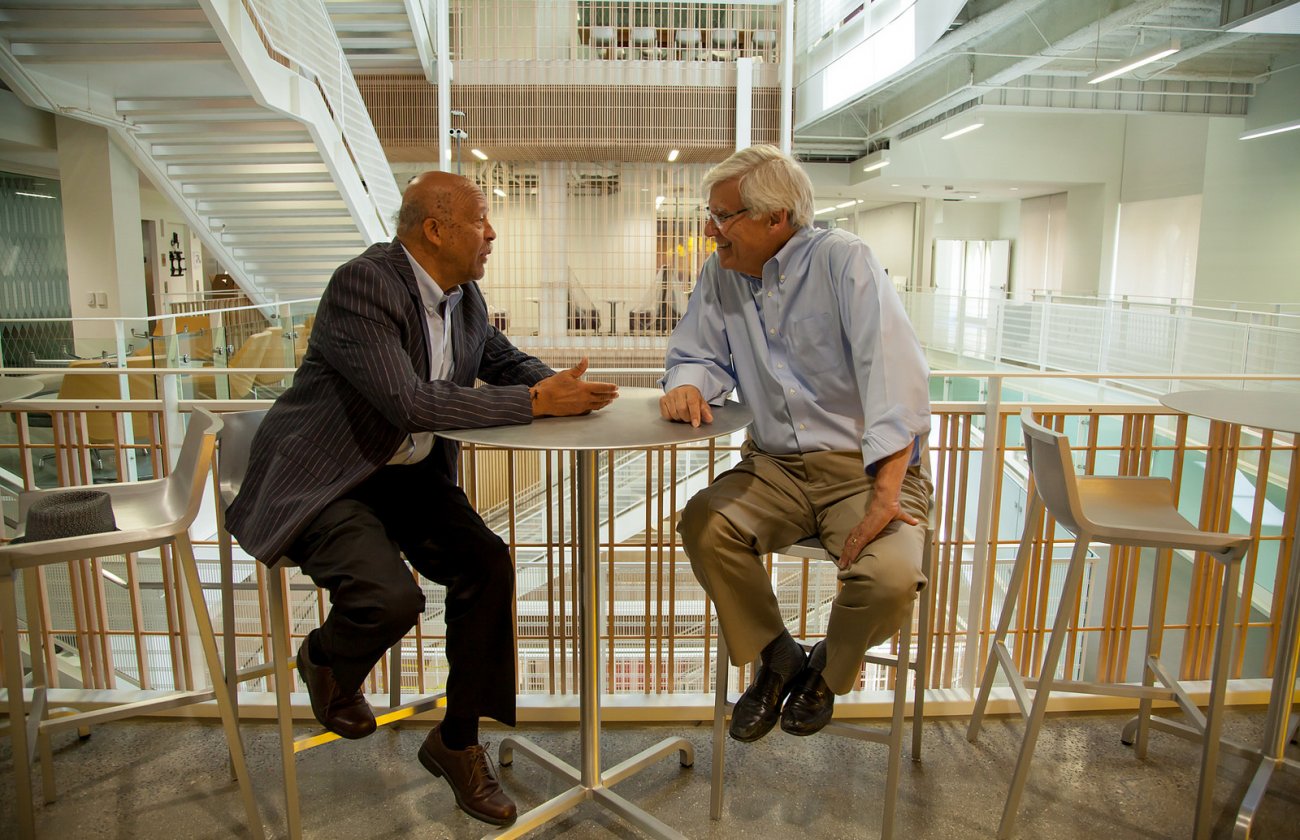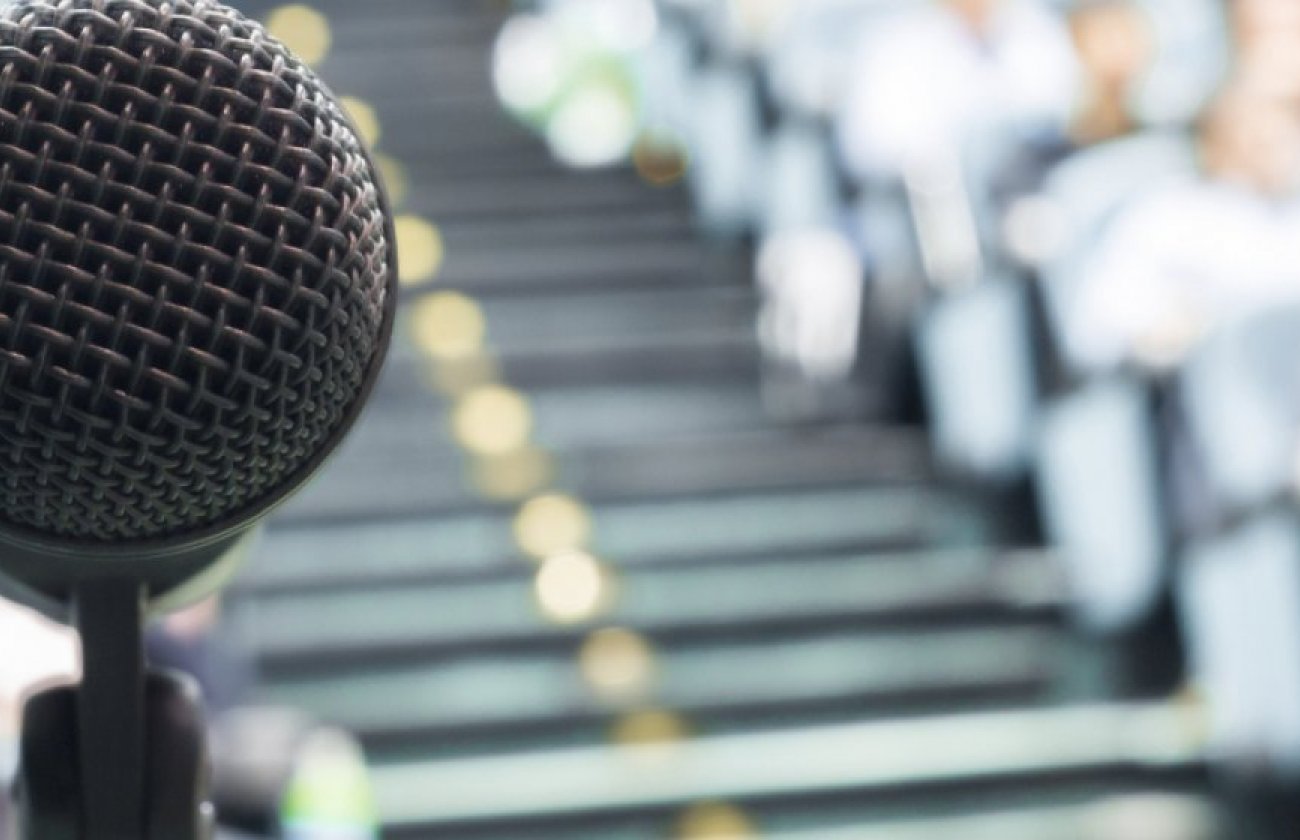The USC Trojans football season opens Thursday, Aug. 29 with a road game in Honolulu against the University of Hawaii. In advance of the game, we checked in for some expert commentary with USC Annenberg Professor Daniel T. Durbin, director of the Annenberg Institute of Sports, Media and Society. Durbin answered questions about the reasons for the team’s wide popularity, the NCAA and about an upcoming major conference organized by the Institute.
Why does Trojan football have such a grip on Los Angeles and the nation?
Most sports fans don’t know that, once upon a time, sports in Los Angeles was the USC Trojans (and nothing else). When the Methodists decided to build the University of Southern California in an open field back in the 1880’s, Los Angeles was little more than a village. The movie industry was forty years from changing the landscape and history of this small far western desert town.
In 1931, USC put Los Angeles on the national sports landscape by defeating the long undefeated Knute Rockne Notre Dame football team. It’s easy to forget how earth shaking that victory was. Notre Dame was the dominant college football power (made legendary by journalists such as Grantland Rice). College football, with Major League Baseball, was the most important and popular sport in the United States. Los Angeles did not have a Major League Baseball team and its college football was generally looked upon as second tier (an east coast bias existed even then). The idea that a Los Angeles team could defeat the mighty Irish seemed unthinkable.
When the USC football team arrived on train from South Bend, crowds estimated over 100,000 cheered and paraded them. USC got national coverage. USC became THE source of civic sports pride in Los Angeles. By the end of the 1930s, USC would win a National Championship. USC would go on to win national titles (on and off) through the early 2000s. By contrast, the NFL arrived in Los Angeles in 1948 . . . and left in 1995. Major League Baseball arrived in 1957. The NBA arrived in 1960. But, all of these were transplanted teams. USC remains the one dominant, homegrown sports entity in Los Angeles that is recognizable as a Los Angeles icon.
Finally, USC sports has existed longer than the corporate memory of the city. Many Angelinos remember the city before the 1948 arrival of the Cleveland Rams (and many more remember the city before the Dodgers and Lakers arrived). But, no one in Los Angeles has lived long enough to remember the city without USC sports as a (if not the) defining sports franchise in the city.
Your Institute has had a number of celebrated football Trojans come in to speak on panels and otherwise during the past years; who were some of these stars and what did you and your students learn from them?
Even a partial list of USC football players who have spoken in my classes would include NFL Hall-of-Famer Ron Yary, Mark Sanchez, Matt Leinart, Jim Hardy, Gordon Gray, Willie Brown, J. K. McKay, C. R. Roberts, Sam “Bam” Cunningham, Manfred Moore, Rod McNeill, Mike Rae, Allan Graf, Anthony Davis, and Jeff Bregel.
All of these players went on to play professional football. Each has different stories to tell, stories that tell us much about football and the nation over the last seventy years.
Jim Hardy and Gordon Gray were World War II era USC sports heroes. C. R. Roberts, Willie Brown, and Sam “Bam” Cunningham were subject to discrimination and threats when USC played southern colleges in the 1950s, 1960s, and 1970s. Half a dozen of these players played on the team that is still often called “the greatest college football team of all-time,” the 1972 Trojans. Allan Graf and Anthony Davis can tell stories of the World Football League and the USFL, two important challenges to NFL dominance in the 1970s and 1980s. Ron Yary was the player the Minnesota Vikings traded legendary Hall-of-Fame quarterback Fran Tarkenton to get the rights to. These players each have valuable narratives that help students understand the evolution of sports during the 20th century.
The NCAA seems to be under a lot of pressure right now -- will the organization survive? If so, how do you suppose it will change, if at all, during the coming year or two?
The NCAA lost even the pretense of moral legitimacy as a governing agency long ago. The scandals at Oregon, Florida State, Penn State, Miami, Vanderbilt, and many others, and the ongoing scandals in the adjudication of the USC case have all left the NCAA with little or no legitimacy even among its supporters. The leadership shows every sign of trying to protect itself financially and legally rather than change to deal with the many problems it has (largely) brought on itself. I wouldn’t look for any change.
Your Institute is developing a major research project titled “The African-American Experience of Major League Baseball.” Could you tell me about this project?
I’m glad you asked. One of the key theories in much communication research is that we understand and explain our world in the stories we tell. There is a body of athletes whose stories have seldom been told in their voice and whose experiences offer a unique insight into American culture and the role sports have played in that culture. The USC AISMS is creating a digital library of oral histories of African-American Major League Baseball players who played in the decades immediately following the breaking of baseball’s color line.
From 1947-1972, Major League Baseball remained the largest (in terms of audience) and most important sports stage in the United States. During that time, the league and American society went through drastic change. In 1947, Jackie Robinson and Larry Doby broke baseball’s color line. This started what Dr. Harry Edwards has called “the slow ordeal of desegregation.” It took 12 years for each team to have at least one African-American player on its roster. In that time, players saw the death of the Negro Leagues and a migration of Negro League players to the Major Leagues. African-American players often had to stay at separate hotels and eat at separate restaurants from their teammates. Many were threatened. And many were actively engaged in the civil rights struggles of the era. These players have a unique perspective on the burgeoning civil rights movement of the 1950s, the civil rights legislation of the 1960s and the birth of Black Power as a movement and ideology in the 1970s. Yet, as they age, there is no comprehensive collection of oral histories from this important group of athletes. This research project will give scholars and the public a library of digitally recorded oral histories of African-American players who took the stage in Negro League and Major League Baseball during this 25-year span.
We have already recorded many hours of histories by players such as Mudcat Grant, “Downtown” Ollie Brown, Sweet Lou Johnson, Oscar Brown and Bennie Daniels. We are in the process of gathering the remaining living players who can offer their insights into this important historical era and continuing to build the library. We are also working on developing funding to launch the online library soon.
You recently announced the Institute's next major conference, "Sports & The LGBT Experience." From stories about Jason Collins to Robbie Rogers to Brittney Griner to calls to boycott the Sochi Olympics, there appears to be a tremendous amount of popular media interest in these topics right now. Is your conference in response to some or all of the above?
First and foremost, this conference is built on the vision and work of its co-directors. Adam Rogers of The Norman Lear Center and Evan Brody of the USC Annenberg School for Communication have already put together an exciting group of journalistic, academic, and athlete voices for this program and they should receive all the credit for the great success it will be.
USC Annenberg is fortunate to have several scholars with a special interest in the discussion of sports and the LGBT experience. Evan is developing a growing reputation as a significant voice in scholarly work in this area and Adam has produced work on a variety of sports subjects that has been broadly read.
This conference grew from the recognition that this is a perennial issue in the discussion of sports and its role in socializing fans and athletes. The current discussions of “outings” and the issues Russia faces with the Sochi Olympics and the questions of gay rights have only reinforced the timeliness of this discussion and the importance of the work Evan and Adam are doing.
Back now to football season. What's the question you've been hearing most this off-season from Trojan fans - whether students in your classes or otherwise? And please tell me it ain't, "How come we can't watch the PAC-12 network?"
The most common question I get is “How do you think the Trojans football team will do this year?” Do you really want me to answer that?









